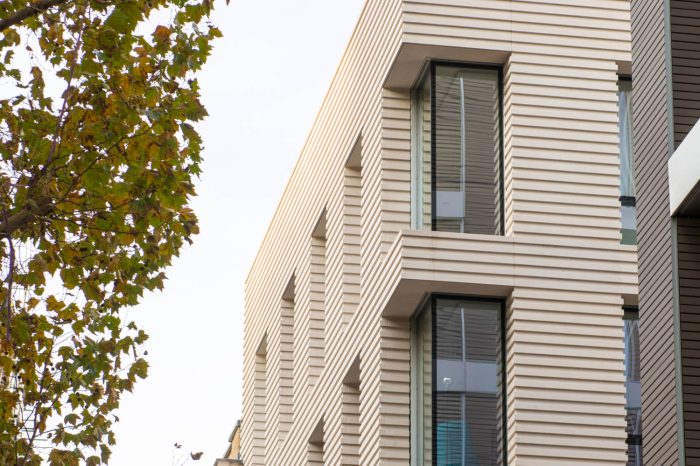Cabeca Veada Shelly
Cabeca Veada Shelly
Intended to make a difference to the eye, the Shelly Stag Head has as its main characteristic the fossils integrated in it during its formation. With a cream coloured background and the respective fossils that mark the difference in its formation, the Shelly Stag Head is one of the most used in the interiors of Portuguese houses for centuries. Directly from the natural park Serras de Aire e Candeeiros, this limestone presents a very hard formation, making it ideal for both internal and external paving.
Finishings
Bushammered
Hitting the material, with a masonry tool called a bush hammer, that generates uniformly distributed craters of different sizes over the surface of natural stone.
Honed
A honed finish is identical to the polished finish, the surface is smooth but without glare or light reflections.
Polished
Abrasive treatments with repeated applications result a shiny surface, highlights the color and properties of the natural stone.
Sawn
Rough and irregular surface with small furrows and undulations in a mate tone.
Sandblasted
Blasting silica sand against the material through an air gun and generates very small craters.
Brushed
Abrasive brushes under high pressure generate a touch-sensitive and smooth surface of natural stone.
Scratched
Scratched finish is applied so that the surface exhibits a texture with straight reliefs and natural colours.
Splitted
Splitting stone either by hand or by machine so that the surface exhibits a natural quarry texture.
Recommended Use
Internal Flooring
External Flooring
Internal Covering
External Covering
Masonry
Related




